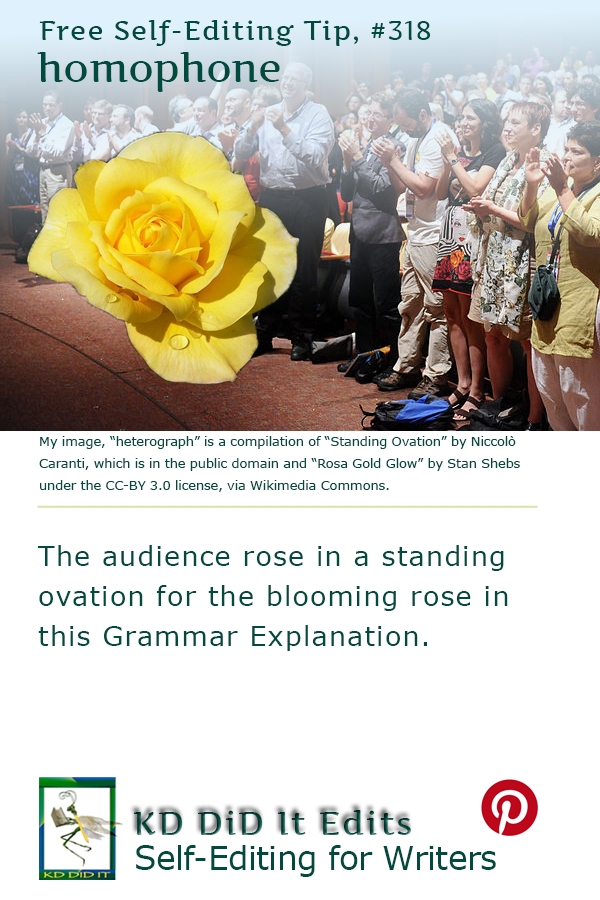Revised as of
7 Mar 2023
A type of linguistic word play, a homophone is a subset of homonym.
If you break homophone apart:
Homo- means same
-phone means sound
This means a homophone sounds the same. It may or may not be spelled the same and it does not mean the same. It may comprise one or more words (one word is the most common).
If the homophone is spelt the same, then it is also a homonym; if it has a different spelling, then it’s an heterograph.
Like the homonym, it is one of the most frequently confused of word groups as the words sound similar; some of the Word Confusions about which I post are homophones.
Linguistics and Word Confusions sometimes . . .
. . . combines the systematic study of the nature, structure, and variation of language (of which grammar is a part), which describes how people use language while the Word Confusion is a pair (or more) of words that are confused spelling-wise with each other. Combining these two categories keeps writers aware of how words are used (or spelled!) determining a character’s social and educational level and the time period for the story.
As I discover more examples, also-known-ases, and additions, I’ll update this post. If you have a suggestion, I would appreciate you contacting me. If you found this post on “Homophone” interesting, consider subscribing to KD Did It, if you’d like to track this post for future updates.
| Homophone | ||||||||||||||||||
| Part of Speech: Linguistics, Semantics, Word Play, Figure of Speech | ||||||||||||||||||
| Definition: A type of homonym that sounds alike BUT have different meanings and different spellings. | ||||||||||||||||||
| SOME Single-Word Examples: | ||||||||||||||||||
| SOME Phrase Examples: | ||||||||||||||||||
|
||||||||||||||||||
C’mon, get it out of your system, bitch, whine, moan . . . which words are your pet peeves? Also, please note that I try to be as accurate as I can, but mistakes happen or I miss something. Email me if you find errors, so I can fix them . . . and we’ll all benefit!
Satisfy your curiosity about other Linguistics posts by exploring its homepage or more generally explore the index of self-editing posts. You may also want to explore Book Layout & Formatting Ideas, Formatting Tips, Grammar Explanations, the Properly Punctuated, Word Confusions, Writing Ideas and Resources, and Working Your Website.
Resources for Homophone
“Homophone.” Wikipedia. n.d. Web. n.d. <https://en.wikipedia.org/wiki/Homophone>.
Moore, Carol. “Explanation of Homonyms, Homophones, Homographs, and Heteronyms.” Buzzy Bee Riddles. n.d. Web. n.d. <http://www.magickeys.com/books/riddles/words.html>.
Pinterest Image Credits
Standing Ovation by Niccolò Caranti is in the public domain as well as under the CC BY-SA 3.0 license. A photo of Rosa Gold Glow at the San Jose Heritage Rose Garden in California was taken by Stan Shebs and is under the GFDL, CC BY-SA 3.0, or CC BY-SA 2.5 licenses. Both are via Wikimedia Commons.


